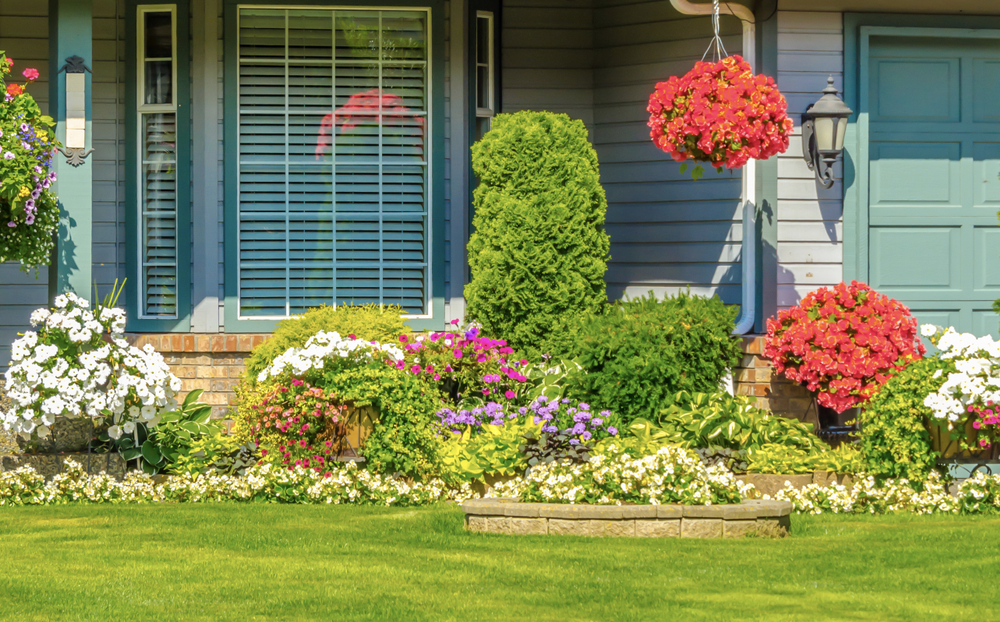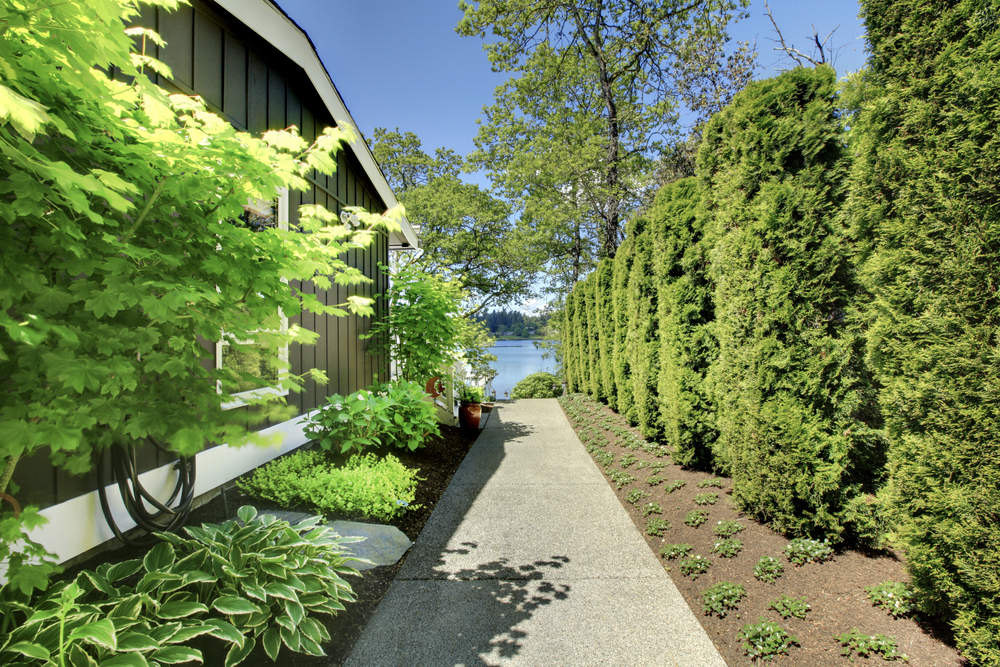Most people probably don’t think about the landscaping when they choose a color for their house. In fact, if you buy an existing home, you are inheriting the color choice of the first owner. The exception is when you are building your own home or you are replacing or painting the siding on an existing home. The easiest colors to work with are the greens, beiges and browns of nature. Pretty much any color flower will work with this color palette. That does not mean that you can’t have the blue, purple or red house of your dreams. Those colors just require more thought when deciding on the flower bed ideas that will give your home a look of harmony with the plantings surrounding it.
Think of your home as a backdrop for your plantings. Get a good size swatch of fabric or a board painted in the same color as your house. Use that to try out different colors. A color wheel can be a great help. You can use the wheel to choose colors next to the color of your home for a calm coordinated look or go directly across the color wheel for a more exciting look that is still pleasing to the eye. By using your fabric or board, you can lay the other colors on and see which you like and then purchase flowers or plant flower seeds in those colors.

Don’t forget about the trim color. If you have a grey house that has burgundy trim color, including plants with burgundy flowers or burgundy leaves will give it a visually connected look to your home and landscape.
If your home has been painted a bright color, choose bright colors for your garden beds. Pastel flowers will appear washed out against the vibrant background. A better choice is to find flowers that match the house color or, for real punch, are opposite the color wheel of the house color.
If you aren’t confident in your color choices, try them out with annuals. That way, you are only committed for one season. For example, you really want orange coneflowers and think the color would be stunning, but you are afraid of this bold color choice. Plant a tall version of zinnia in orange to try it out. The height and shape are similar and if they look as good as you hoped, replace the space that held the zinnias with your favorite orange coneflowers.

A pastel-colored house may benefit from emphasizing the color by planting flowers that match the house color. If your home is painted a cool color which includes blue, green and purple, planting flowers in the cool colors will help to bring out the color. Alternatively, again, move across the color wheel to the opposite side and use a high contrast color. It may seem that using such a contrast to the primary house color would result in a chaotic, unpleasing effect. If you choose the color across the color wheel, the colors will harmonize and bring out the best in both.
A color with the addition of grey is called a tone. Think colonial colors. These are much easier to achieve an attractive color combination with as they can look striking with different shades and tints of the primary color. They are a little more forgiving.
Be careful of white when developing your flower bed ideas. It can be jarring in an otherwise color-coordinated garden bed. Small amounts of white will go a long way but still be effective if your trim is white or you have a white house. An alternative is to develop a moon garden, where white is the predominant color. Choose blooming flowers in white and look for variegated plants with white in the foliage.

Remember that the gardens surrounding your home don’t have to match. You may choose a more subdued or even formal look for the front garden and go dramatic in the backyard. Don’t neglect the side gardens. Often, this is the neglected part of the yard and left more functional than beautiful, especially if it is a narrow strip with the only function of separating your yard from your neighbors. Choose plantings that are easy care and low maintenance, but still continue the theme you established in the front garden. The side garden can also be used as a transition between the formal front garden and the fun back garden.
Start your garden bed by evaluating what already exists. There are probably a few green shrubs in the front and there may or may not be plantings on the sides and back of the home. If there are flowering plants, decide if they will fit into your new flower bed ideas. If they do, remove them and replant them in the location needed for your garden plan. If they don’t fit into the color scheme, dig them out and use them in other parts of your yard or gift them to a friend. Take the time to amend the soil. This is especially important if you are planting new shrubs or even perennials that will remain in their location for years. Add compost and organic material to give your new garden the best start possible and continue to benefit your plants for years to come.
Remember that you can always make changes. That is the beauty of gardening. Each year will increase your knowledge, and if something doesn’t work out the way you thought, you can try something else. Besides, there are always new plants available each year to tempt you. Have fun approaching your garden in a new way and don’t be afraid to drive around your neighborhood for inspiration.











































